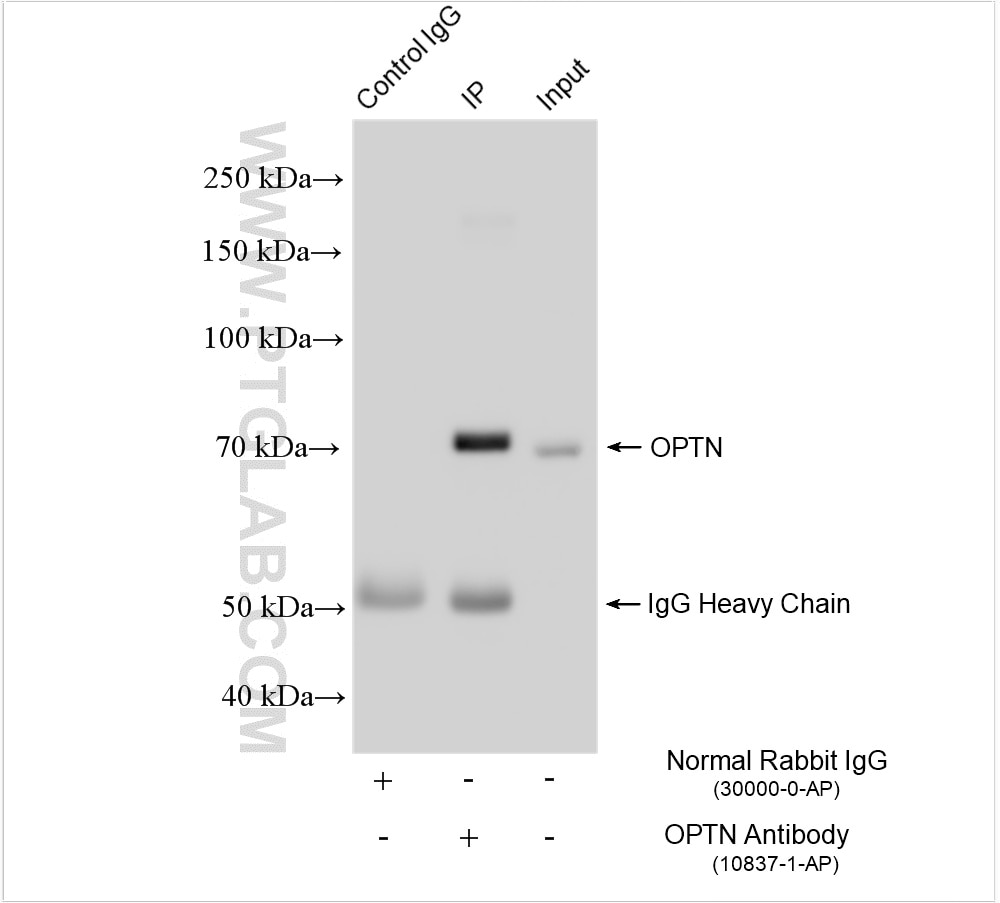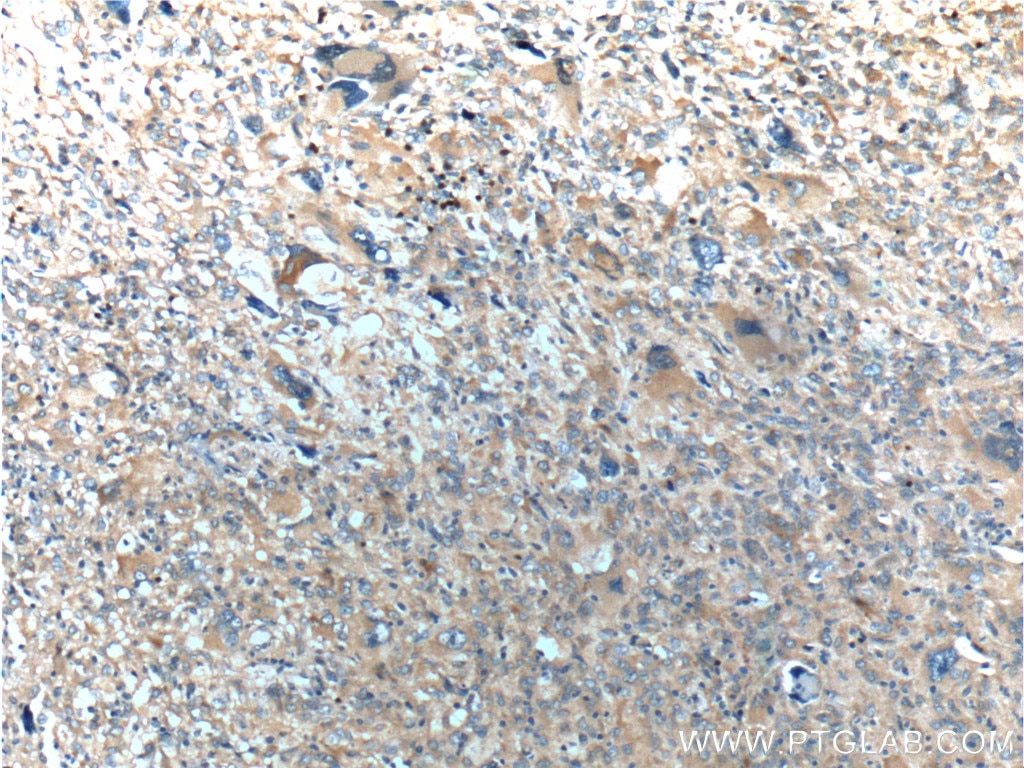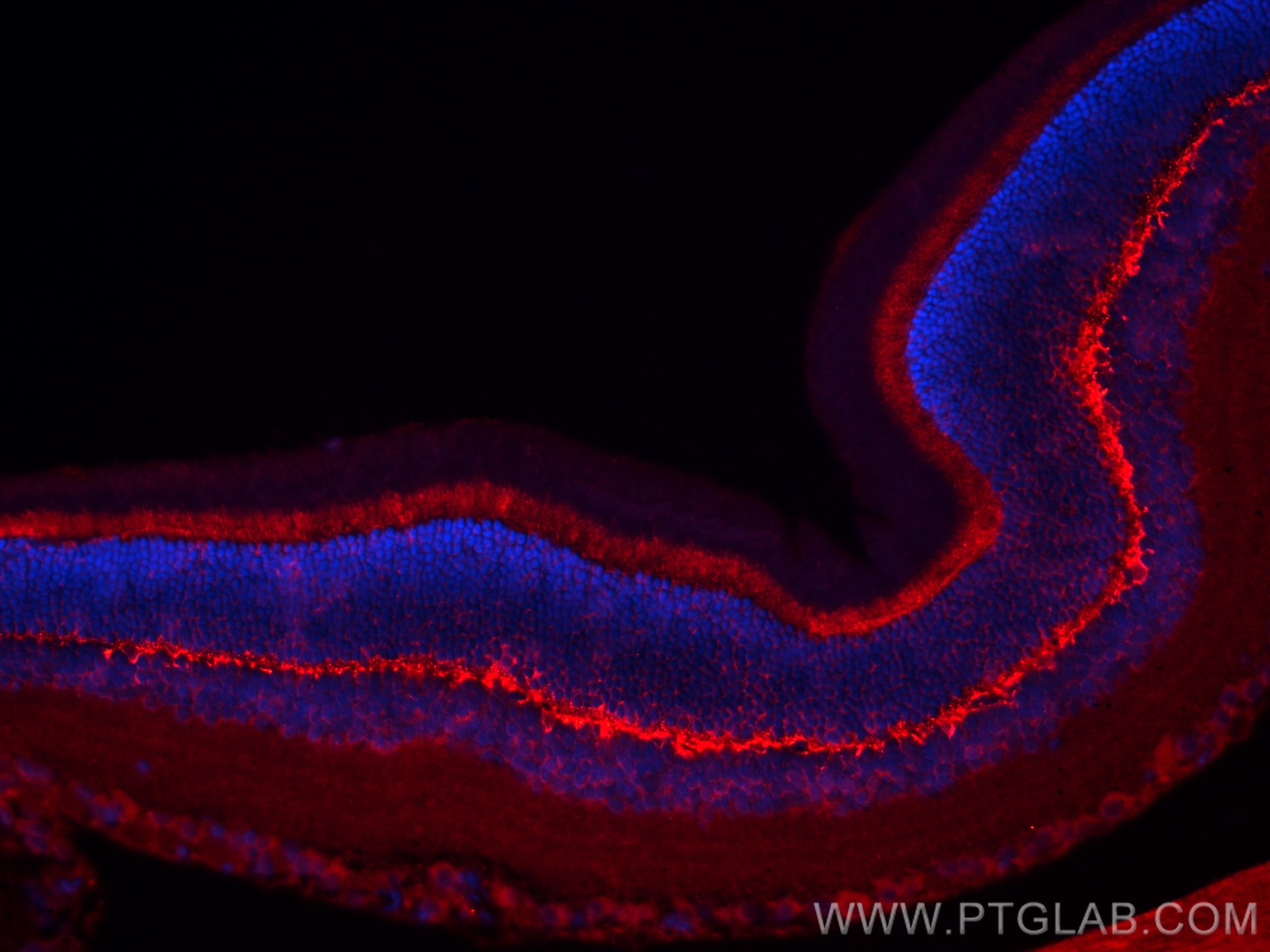Validation Data Gallery
Tested Applications
| Positive WB detected in | HeLa cells, mouse brain tissue, rat brain tissue, HepG2 cells, NCCIT cells |
| Positive IP detected in | HeLa cells |
| Positive IHC detected in | human gliomas tissue Note: suggested antigen retrieval with TE buffer pH 9.0; (*) Alternatively, antigen retrieval may be performed with citrate buffer pH 6.0 |
| Positive IF-P detected in | rat eye tissue |
| Positive IF/ICC detected in | MCF-7 cells |
| Positive FC (Intra) detected in | HeLa cells |
Recommended dilution
| Application | Dilution |
|---|---|
| Western Blot (WB) | WB : 1:5000-1:50000 |
| Immunoprecipitation (IP) | IP : 0.5-4.0 ug for 1.0-3.0 mg of total protein lysate |
| Immunohistochemistry (IHC) | IHC : 1:50-1:500 |
| Immunofluorescence (IF)-P | IF-P : 1:50-1:500 |
| Immunofluorescence (IF)/ICC | IF/ICC : 1:200-1:800 |
| Flow Cytometry (FC) (INTRA) | FC (INTRA) : 0.40 ug per 10^6 cells in a 100 µl suspension |
| It is recommended that this reagent should be titrated in each testing system to obtain optimal results. | |
| Sample-dependent, Check data in validation data gallery. | |
Published Applications
| KD/KO | See 15 publications below |
| WB | See 107 publications below |
| IHC | See 8 publications below |
| IF | See 22 publications below |
| IP | See 7 publications below |
| CoIP | See 4 publications below |
Product Information
10837-1-AP targets OPTN/Optineurin in WB, IHC, IF/ICC, IF-P, FC (Intra), IP, CoIP, ELISA applications and shows reactivity with human, mouse, rat samples.
| Tested Reactivity | human, mouse, rat |
| Cited Reactivity | human, mouse, rat, pig, monkey, hamster |
| Host / Isotype | Rabbit / IgG |
| Class | Polyclonal |
| Type | Antibody |
| Immunogen |
CatNo: Ag1272 Product name: Recombinant human OPTN protein Source: e coli.-derived, PGEX-4T Tag: GST Domain: 233-577 aa of BC013876 Sequence: VSQLLLCLREGNQKVERLEVALKEAKERVSDFEKKTSNRSEIETQTEGSTEKENDEEKGPETVGSEVEALNLQVTSLFKELQEAHTKLSEAELMKKRLQEKCQALERKNSAIPSELNEKQELVYTNKKLELQVESMLSEIKMEQAKTEDEKSKLTVLQMTHNKLLQEHNNALKTIEELTRKESEKVDRAVLKELSEKLELAEKALASKQLQMDEMKQTIAKQEEDLETMTILRAQMEVYCSDFHAERAAREKIHEEKEQLALQLAVLLKENDAFEDGGRQSLMEMQSRHGARTSDSDQQAYLVQRGAEDRDWRQQRNIPIHSCPKCGEVLPDIDTLQIHVMDCII 相同性解析による交差性が予測される生物種 |
| Full Name | optineurin |
| Calculated molecular weight | 66 kDa |
| Observed molecular weight | 66-70 kDa |
| GenBank accession number | BC013876 |
| Gene Symbol | OPTN |
| Gene ID (NCBI) | 10133 |
| RRID | AB_2156665 |
| Conjugate | Unconjugated |
| Form | |
| Form | Liquid |
| Purification Method | Antigen affinity purification |
| UNIPROT ID | Q96CV9 |
| Storage Buffer | PBS with 0.02% sodium azide and 50% glycerol{{ptg:BufferTemp}}7.3 |
| Storage Conditions | Store at -20°C. Stable for one year after shipment. Aliquoting is unnecessary for -20oC storage. |
Background Information
OPTN, also named as FIP2, GLC1E, HIP7, HYPL and NRP, plays a neuroprotective role in the eye and optic nerve. It is probably part of the TNF-alpha signaling pathway that can shift the equilibrium toward induction of cell death. OPTN may act by regulating membrane trafficking and cellular morphogenesis via a complex that contains Rab8 and hungtingtin (HD). OPTN may constitute a cellular target for adenovirus E3 14.7, an inhibitor of TNF-alpha functions, thereby affecting cell death. Defects in OPTN are a cause of susceptibility to normal pressure glaucoma (NPG). OPTN mutated in adult-onset primary open angle glaucoma. It supports the protective role of OPTN in the trabecular meshwork. OPTN has 3 isoforms with MW 66,65 and 60 kDa (refer to UniProt). Catalog#10837-1-AP recognises 66 and 70-74 kDa band, and the additional 70-74 kDa band due to phosphorylation.
Protocols
| Product Specific Protocols | |
|---|---|
| FC protocol for OPTN/Optineurin antibody 10837-1-AP | Download protocol |
| IF protocol for OPTN/Optineurin antibody 10837-1-AP | Download protocol |
| IHC protocol for OPTN/Optineurin antibody 10837-1-AP | Download protocol |
| IP protocol for OPTN/Optineurin antibody 10837-1-AP | Download protocol |
| WB protocol for OPTN/Optineurin antibody 10837-1-AP | Download protocol |
| Standard Protocols | |
|---|---|
| Click here to view our Standard Protocols |
Publications
| Species | Application | Title |
|---|---|---|
Mol Cell TNIP1 inhibits selective autophagy via bipartite interaction with LC3/GABARAP and TAX1BP1 | ||
Acta Neuropathol p62 positive, TDP-43 negative, neuronal cytoplasmic and intranuclear inclusions in the cerebellum and hippocampus define the pathology of C9orf72-linked FTLD and MND/ALS. | ||
Acta Neuropathol Optineurin inclusions occur in a minority of TDP-43 positive ALS and FTLD-TDP cases and are rarely observed in other neurodegenerative disorders. | ||
Mol Cell Systematically defining selective autophagy receptor-specific cargo using autophagosome content profiling. |









